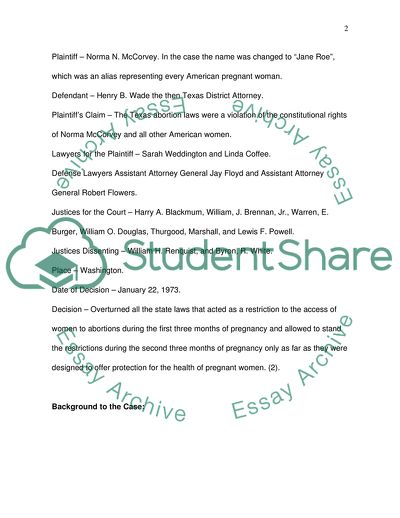Cite this document
(Roe Versus Wade's Abortion Trial Case Study Example | Topics and Well Written Essays - 2250 words, n.d.)
Roe Versus Wade's Abortion Trial Case Study Example | Topics and Well Written Essays - 2250 words. https://studentshare.org/law/1711028-roe-v-wade-the-abortion-trial
Roe Versus Wade's Abortion Trial Case Study Example | Topics and Well Written Essays - 2250 words. https://studentshare.org/law/1711028-roe-v-wade-the-abortion-trial
(Roe Versus Wade'S Abortion Trial Case Study Example | Topics and Well Written Essays - 2250 Words)
Roe Versus Wade'S Abortion Trial Case Study Example | Topics and Well Written Essays - 2250 Words. https://studentshare.org/law/1711028-roe-v-wade-the-abortion-trial.
Roe Versus Wade'S Abortion Trial Case Study Example | Topics and Well Written Essays - 2250 Words. https://studentshare.org/law/1711028-roe-v-wade-the-abortion-trial.
“Roe Versus Wade'S Abortion Trial Case Study Example | Topics and Well Written Essays - 2250 Words”. https://studentshare.org/law/1711028-roe-v-wade-the-abortion-trial.


